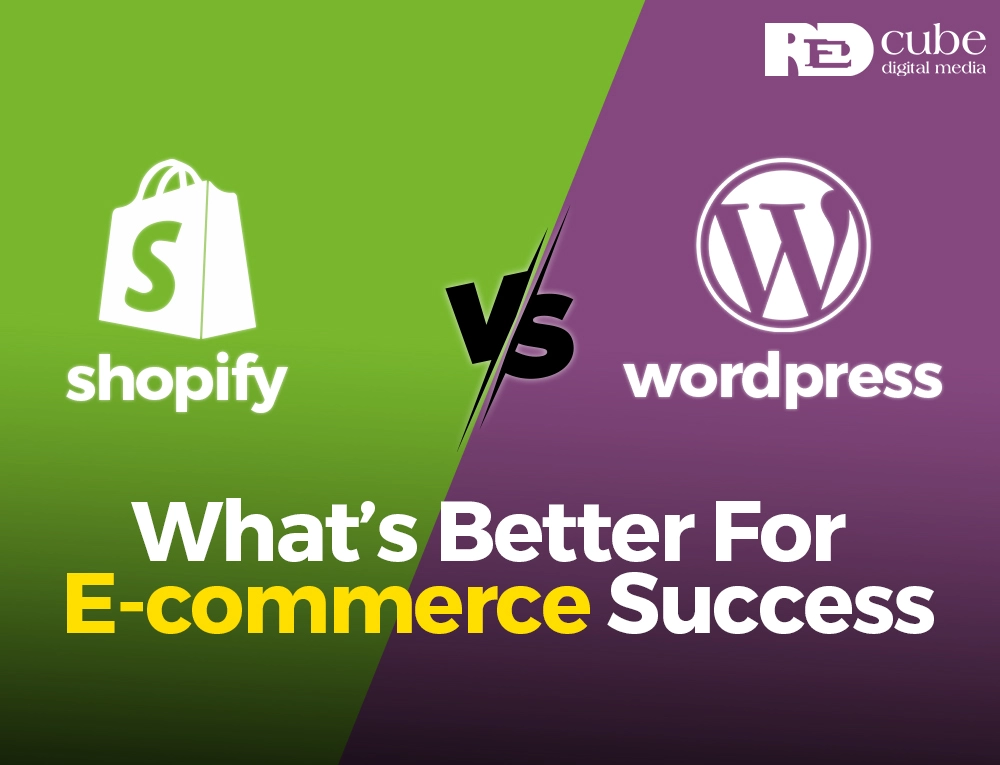Nowadays, in the virtual world, starting an online business is fascinating and at the same time confusing. However, among the reported 24 million e-commerce sites around the world, the determination to stand out involves not only offering a good product, but also the choice of a suitable platform to use for exhibiting the product. Do you say it’s the right time for e-commerce, but don’t know the exact spot? WordPress vs Shopify
Let’s say, your introduction of a product carries the potential to change lives by the issue of how effectively you will present it to your customers. So, are you opting for the Shopify platform, which is specially created for very smooth sales and a flexible and highly customizable WordPress with WooCommerce?
This dictates you to think and see not just now but look far down the road. How much control do you want to exercise over your website? What kind of technical knowledge do you seek?
The decision that is made between Shopify vs WordPress could be the defining factor on your e-commerce journey. In this blog, we will analyze a detailed comparison of these two platforms, examining their features, advantages, and weak spots.
At the end of the day, our objective is to provide you with the necessary information to evaluate and be sure of which one of them matches your unique business goals. Let’s solve the puzzles within Shopify vs WordPress and, at last, the choice of tool to use will open the online world for your business to succeed.
Market Position & Popularity: Shopify vs WordPress
Current Market Share
According to recent data from BuiltWith (2024), Shopify powers over 4.9 million live websites worldwide, while WooCommerce maintains over 6 million active stores.
Growth Trends
- Shopify demonstrated a 20% year-over-year growth in total revenue, reaching $5.6 billion in 2023
- WooCommerce experienced a 15% increase in adoption rates across small to medium-sized businesses
Core Features Comparison
When evaluating e-commerce platforms, it’s essential to consider how user-friendly they are, especially for those who may not have extensive technical knowledge. The ease of use can significantly impact your ability to launch and manage an online store effectively. In this comparison, we will explore the core features of two popular platforms: Shopify vs WordPress/WooCommerce.
By examining their onboarding processes, dashboard designs, and overall setup times, we aim to provide insights that will help you determine which option aligns best with your needs and expertise.
Ease of Use
Shopify:
- Dedicated onboarding process
- Intuitive dashboard design
- Pre-built templates requiring minimal customization
- Average setup time: 1-3 days
WordPress/WooCommerce:
- Steeper learning curve
- Highly customizable interface
- Requires basic technical knowledge
- Average setup time: 3-7 days
Shopify vs WordPress: Pricing Structure
Shopify Plans (2024)
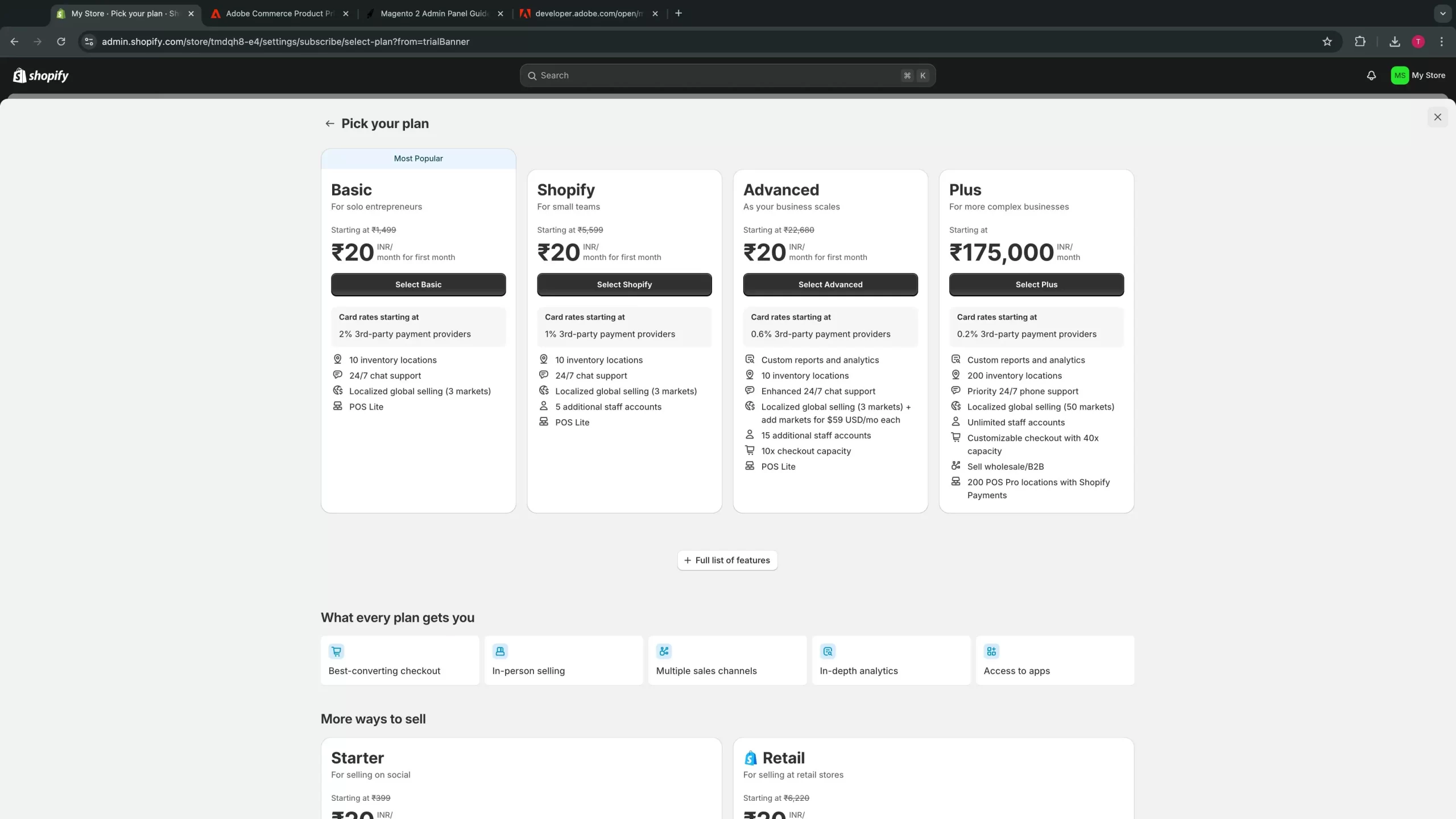
Basic Plan
- Price: ₹1,994/month
- Initial Offer: 3-day free trial, then ₹20 for the first month
- Best For: Solo entrepreneurs and startups
Key Features:
- Third-party payment provider fee: 2%
- 10 inventory locations
- 24/7 chat support
- Global selling across 3 markets
- POS Lite included
Shopify Plan
- Price: ₹7,447/month
- Initial Offer: 3-day free trial, then ₹20 for first month
- Best For: Small teams and growing businesses
Key Features:
- Third-party payment provider fee: 1%
- 10 inventory locations
- 24/7 chat support
- Global selling across 3 markets
- 5 additional staff accounts
- POS Lite included
Advanced Plan
- Price: ₹30,164/month
- Initial Offer: 3-day free trial, then ₹20 for first month
- Best For: Scaling businesses and larger operations
Key Features:
- Third-party payment provider fee: 0.6%
- Custom reports and analytics
- 10 inventory locations
- Enhanced 24/7 support
- Global selling across 3 markets (additional markets: $59 USD/month each)
- 15 additional staff accounts
- 10x checkout capacity
- POS Lite included
WordPress Commerce
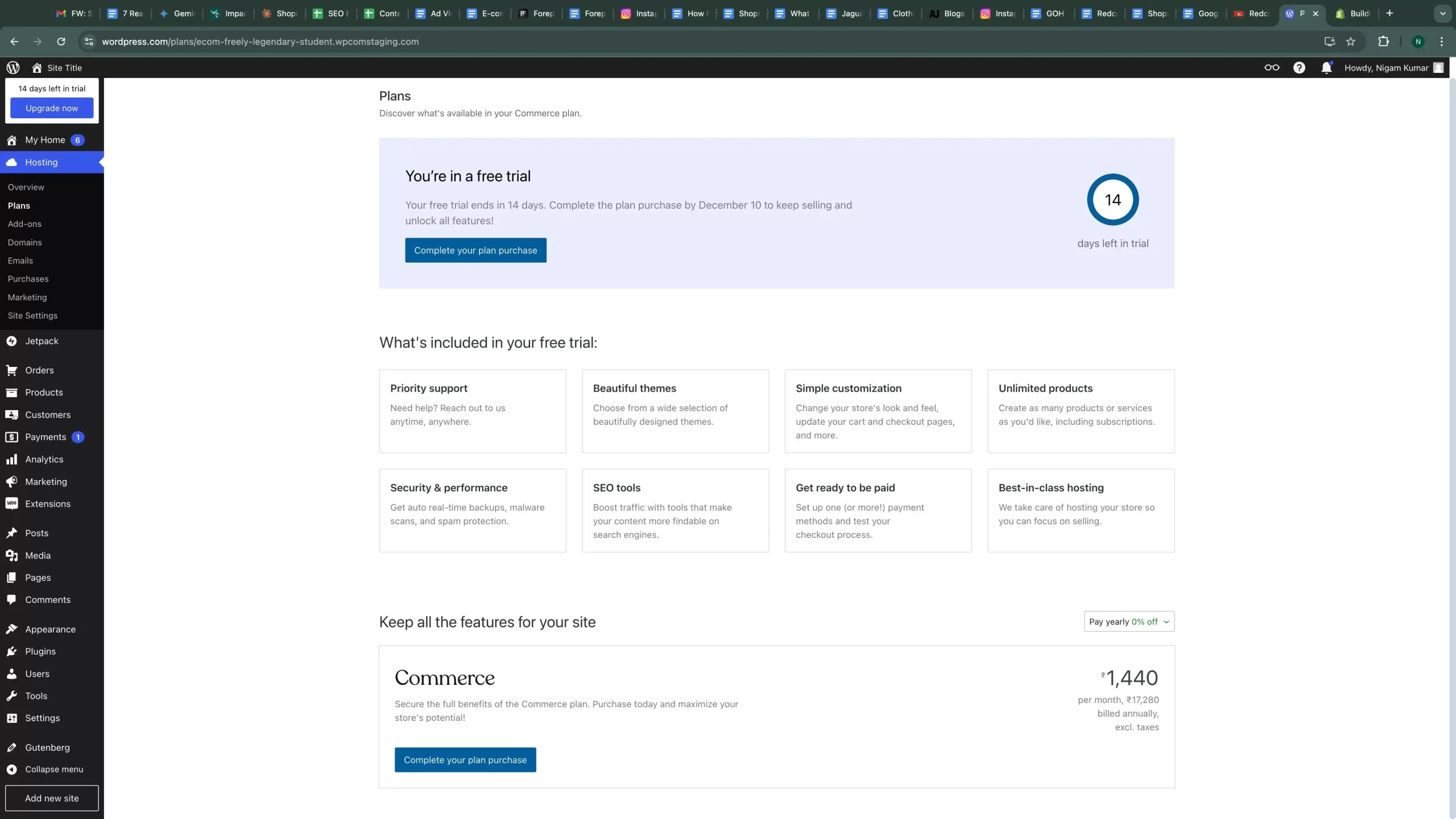
Commerce Plan
- Price: ₹1,440/month (₹17,280 billed annually, excluding taxes)
- Trial Period: 14-day free trial
- Best For: Content-driven e-commerce sites
Key Features:
- Enterprise-grade hosting
- Advanced Jetpack features
- Access to all premium themes
- 50 GB storage
- Ad-free experience
- Payment processing capabilities
- Exclusive content options
- Advanced design customization
- PayPal integration
- Google Analytics integration
- Advanced social media tools
- Monetization options
- VideoPress support
- Comprehensive SEO tools
- Plugin installation capability
- Theme installation options
- Developer access (SFTP, SSH, WP-CLI, Database)
- White-label solution (no WordPress.com branding)
- Multi-country payment acceptance (60+ countries)
- Major shipping carrier integrations
- Unlimited product listings
- E-commerce marketing toolkit
- 0% transaction fee for payments
Notable Inclusions:
- Priority customer support
- Customizable themes
- Real-time backups
- Malware protection
- Spam prevention
- Search engine optimization tools
- Multiple payment gateway options
- Professional hosting services
Technical Considerations
Performance Metrics
Recent studies by GTmetrix show:
Shopify:
- Average page load time: 2.59 seconds
- Mobile optimization score: 89/100
- Server response time: 382ms
WordPress/WooCommerce:
- Average page load time: 2.96 seconds
- Mobile optimization score: 82/100
- Server response time: 428ms
Security Features
Shopify:
- Built-in SSL certificates
- PCI DSS compliance
- Automated backup systems
- 99.98% uptime guarantee
WordPress/WooCommerce:
- Manual SSL implementation
- Security plugins required
- Custom backup solutions needed
- Uptime depends on hosting provider
SEO Capabilities
On-Page Optimization
Shopify:
- Automated XML sitemap generation
- Built-in SEO tools
- Mobile-first indexing support
- Structured data implementation
WordPress/WooCommerce:
- Complete control over SEO elements
- Powerful plugins like Yoast SEO
- Custom URL structures
- Advanced metadata management
Design & Customization: Shopify vs WordPress
When it comes to establishing an online presence, the choice of platform can significantly influence your brand’s identity and user experience. Two of the most popular options for e-commerce are Shopify and WordPress, each offering unique advantages in design and customization. Understanding the differences in theme selection and customization flexibility is essential for businesses looking to create a distinctive digital footprint.
In this section, we’ll explore how Shopify and WordPress/WooCommerce compare in terms of available themes, as well as the level of customization they provide, helping you make an informed decision for your e-commerce journey.
Theme Selection
Shopify:

- Official theme store offers 100+ premium themes
- Price range: $0-350
- Mobile-responsive designs
- Industry-specific templates
WordPress/WooCommerce:
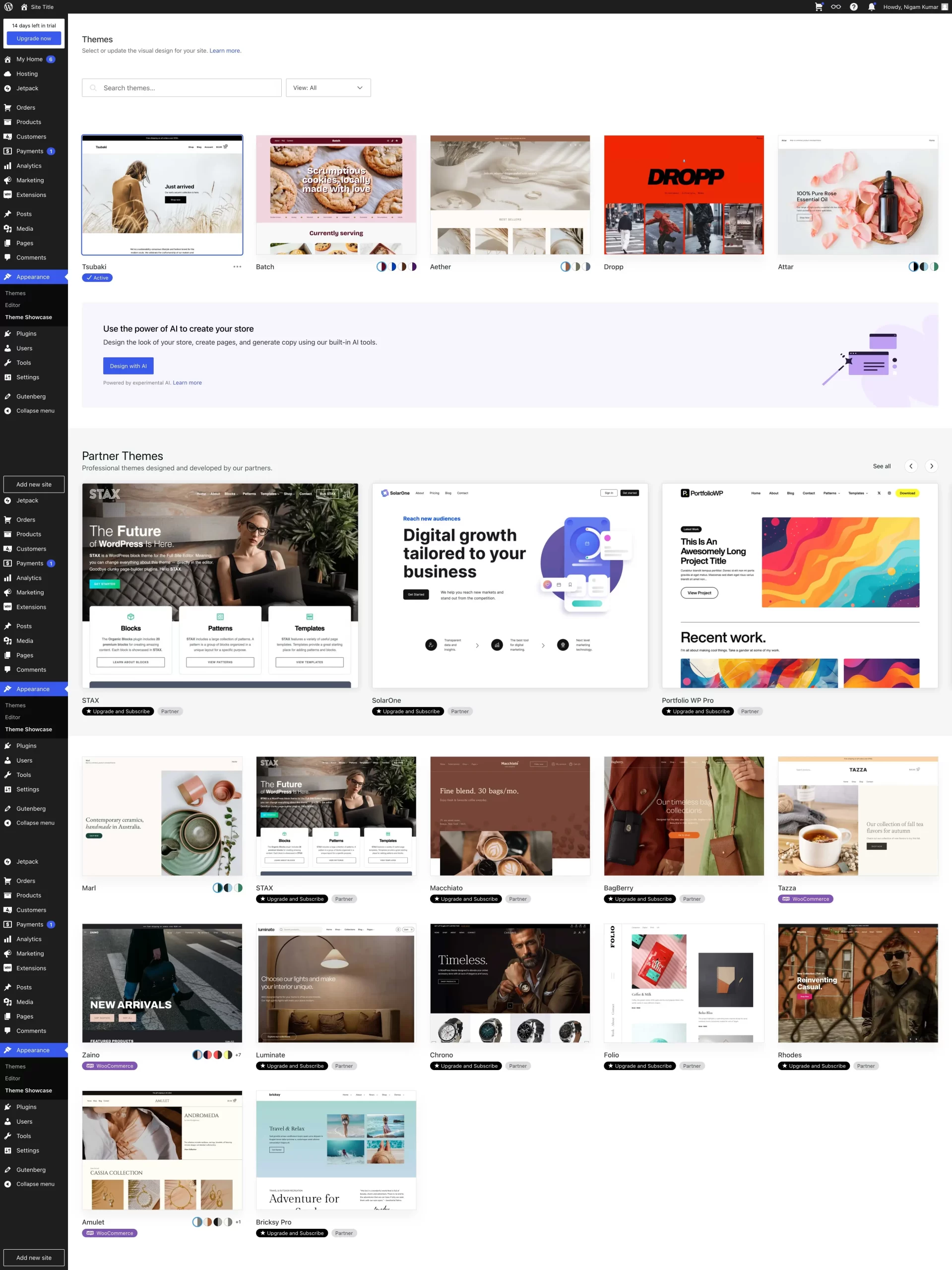
- Thousands of themes available
- Design with AI
- Price range: $0-200
- Highly customizable templates
- Third-party marketplace options
Customization Flexibility
“The ability to customize your e-commerce platform directly impacts your brand’s unique digital presence,” notes Sarah Chen, Design Director at Shopify Plus.
Shopify:
- Visual theme editor
- VLimited code access
- CSS and HTML modifications
- Template language: Liquid
WordPress/WooCommerce:
- Full code access
- Page builders (Elementor, Divi)
- Unlimited design possibilities
- PHP, CSS, HTML, and JavaScript support
Payment Gateway Integration
In today’s digital age, choosing the right payment gateway can make or break your online business. Are you maximizing your revenue potential by leveraging the best payment solutions available? Whether you’re using Shopify or WordPress/WooCommerce, the options are vast, and understanding the associated costs and features is crucial.
How do your payment processing choices impact your bottom line, and which platform offers the flexibility your business needs? Let’s explore the available payment gateway options, their processing fees, and what they can mean for your e-commerce success.
Available Options
Shopify:
- 100+ payment gateways
- Shopify Payments (0% transaction fee)
- International payment methods
- Cryptocurrency support
WordPress/WooCommerce:
- 140+ payment gateways
- PayPal, Stripe integration
- Regional payment options
- Custom gateway development
Transaction Costs
According to recent data from Payment Methods Worldwide (2024):
Shopify Average Processing Fees:
- Online credit card rates: 2.4-2.9%
- In-person rates: 2.4-2.7%
- Additional fees for third-party gateways
WooCommerce Average Processing Fees:
- Stripe integration: 2.9% + $0.30
- PayPal: 2.9% + $0.30
- No additional platform fees
Inventory Management
Core Features
Shopify:
- Real-time inventory tracking
- Multi-location support
- Automated stock alerts
- Bulk product upload
WordPress/WooCommerce:
- Basic inventory tracking
- Plugin-extended capabilities
- CSV import/export
- Variable product management
Advanced Capabilities
Research by Digital Commerce 360 reveals:
- 76% of successful e-commerce businesses use automated inventory management
- Multi-channel selling increases revenue by 38% on average
Customer Support: Shopify vs WordPress
Platform Assistance
Shopify:
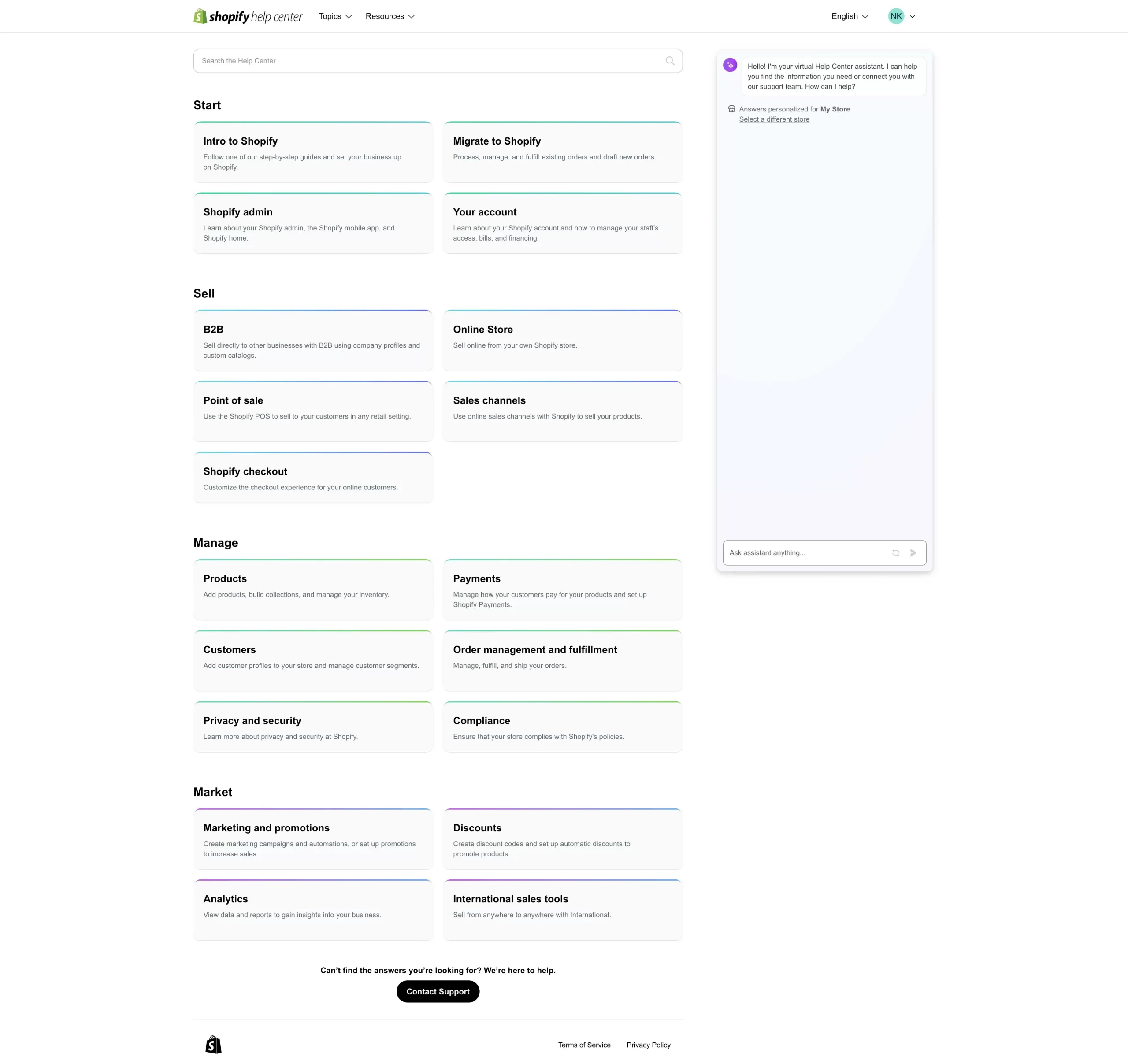
- 24/7 live chat, email, phone support
- Extensive knowledge base
- Community forums
- Priority support for higher plans
WordPress/WooCommerce:
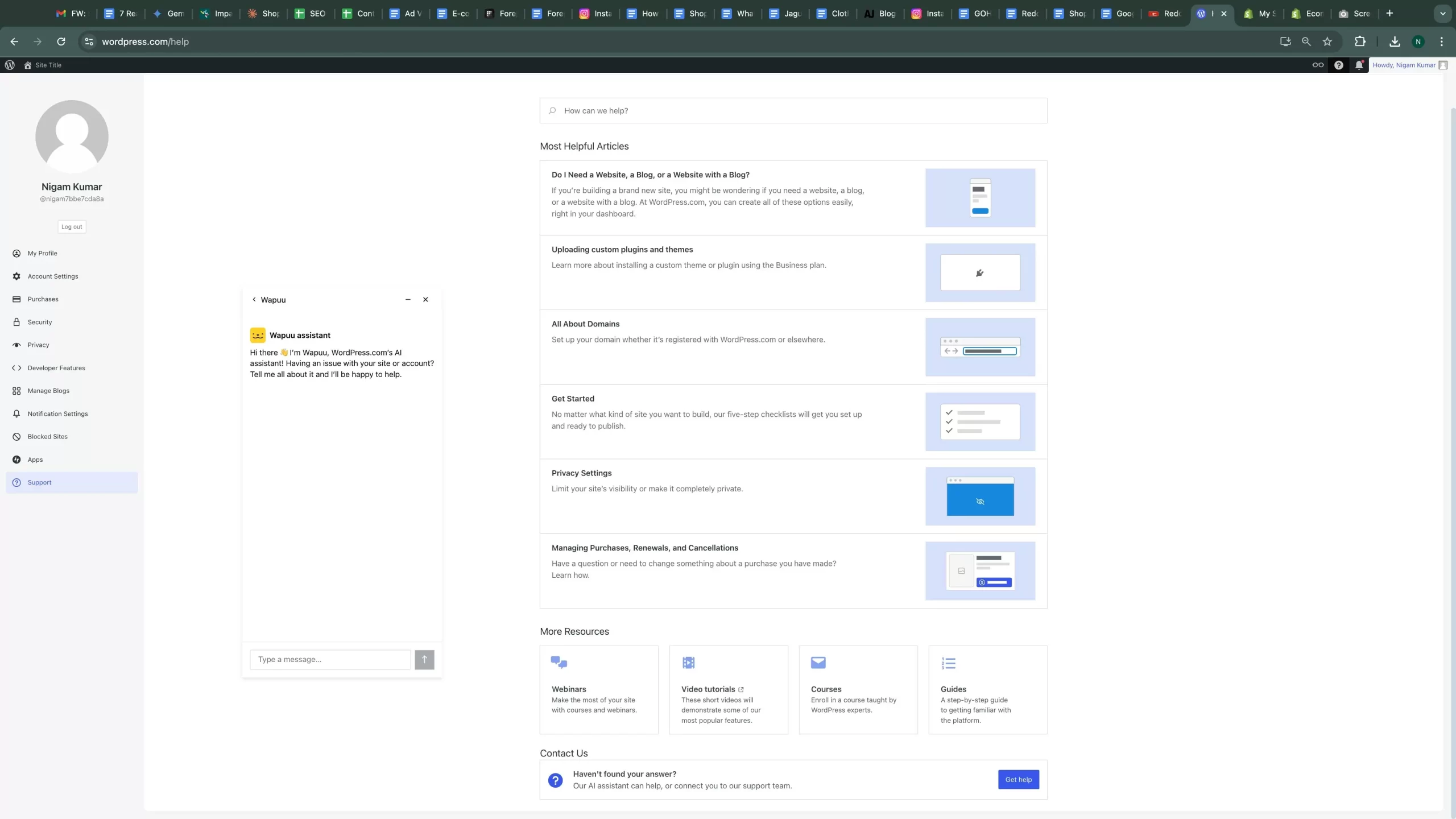
- Community support
- Documentation resources
- Third-party hosting support
- Plugin-specific assistance
Mobile Commerce Features
Mobile Optimization Statistics
Recent data from Statista shows:
- Mobile commerce represents 72.9% of e-commerce sales in 2024
- Mobile-optimized stores see 23% higher conversion rates
Platform-Specific Features:
Shopify:
- Progressive Web App capabilities
- Native mobile app builder
- Mobile payment integration
- Responsive checkout process
WordPress/WooCommerce:
- Mobile-responsive themes
- AMP compatibility
- Mobile optimization plugins
- Custom mobile features
International Sales Capabilities
Global Market Access
Shopify:
- Multi-currency support
- Automatic tax calculations
- International domains
- Local payment methods
WordPress/WooCommerce:
- WPML integration
- Currency converters
- Custom tax rules
- Multiple language support
Analytics & Reporting: Shopify vs WordPress
Built-in Analytics
Shopify:
- Real-time dashboard
- Customer behavior tracking
- Sales analytics
- Inventory reports
WordPress/WooCommerce:
- WooCommerce analytics
- Google Analytics integration
- Custom report builders
- Third-party tracking tools
The Final Verdict: Shopify vs. WordPress/WooCommerce
So, you’re ready to dive into the world of online selling, huh? Great! But first, a big decision: Shopify vs WordPress/WooCommerce?
Why Shopify Might Be Your Best Bet
If you’re looking for a quick and easy way to set up your online store, Shopify is your go-to. Here’s why:
- No Tech Headaches
- Drag-and-Drop Simplicity
- Ready to Sell, Fast
- All-in-One Solution
Shopify takes care of all the technical stuff, from hosting to security. You don’t need to be a coding whiz to get started.
Building your store is as easy as playing with blocks. No need to mess with complex themes or plugins.
With Shopify, you can launch your store in a matter of days, not weeks or months.
Shopify offers everything you need to run a successful online store, from payment processing to marketing tools.
When to Consider WordPress/WooCommerce
While Shopify is a great option for many, WordPress/WooCommerce might be a better fit if you:
- Need Ultimate Customization
- Have a Tech Team
If you have a very specific vision for your store and want complete control over every aspect, WooCommerce can be a good choice.
You’ll need technical expertise to set up and maintain a WooCommerce store.
So, which one is right for you? Shopify vs WordPress
Consider these factors:
- Technical Skills: If you’re not tech-savvy, Shopify is the way to go.
- Budget: While Shopify has monthly fees, WooCommerce can be more cost-effective in the long run, but you’ll need to factor in hosting, theme, and plugin costs.
- Time: Shopify is faster to set up, while WooCommerce can take more time and effort.
- Growth Plans: Both platforms can scale, but Shopify offers more built-in features and tools to help you grow your business.
Still unsure? No worries! We’re here to help. Feel free to ask any questions you have in the comments below.
We can also provide personalized guidance to help you make the best decision for your business. Ready to take the next step? Reach us for a free quote customized to your requirements.
Frequently Asked Questions: Shopify vs WordPress
Q: Which platform offers better scalability: Shopify vs WordPress?
A: Both platforms scale well, but Shopify handles technical scaling automatically, while WordPress/WooCommerce requires manual optimization.
Q: What about customer support quality?
A: Shopify provides dedicated support, while WordPress relies on community support and hosting providers.
Q: Can I switch platforms later?
A: Yes, migration is possible but requires careful planning and potential professional assistance.

